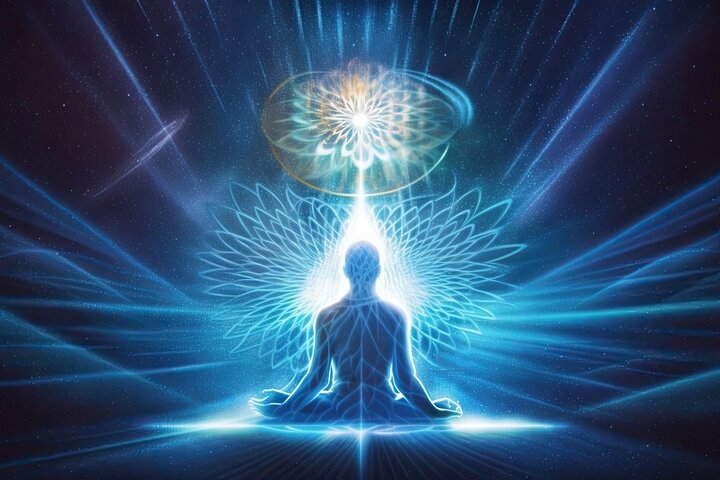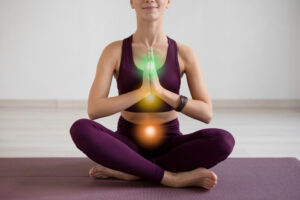Vigyan Bhairava Tantra
Sutra – 87 & 88


In meditation, it is often instructed to close your eyes during practice. However, this sutra emphasizes that merely closing your eyes is not sufficient; the real essence lies in closing your thoughts along with your eyes—something that seldom happens.
We are accustomed to looking outward with our eyes because, since birth, we have been taught to do so. No one has ever told us that these eyes can also look within. If we can turn our gaze inward, most of life’s difficulties and challenges will dissolve.
The first sutra suggests meditating on a new moon night when it has been raining for a long time. While this is impractical in today’s urban lifestyle, it might be feasible for those living in the mountains.
The second sutra, however, is more practical. It suggests meditating during dark nights—five to seven days before or after the new moon—while gazing at the sky or into the darkness. Alternatively, one can create near-darkness in a room and meditate there.
Before delving into the method described in the sutras, let us understand the message they convey. Once the message is clear, it becomes easier to follow the prescribed practice.
The Message of the Sutra
From birth to death, we live in a state of dualism—the experience of separation or “two-ness.” Spirituality, however, is rooted in non-dualism, the experience of oneness. When we open our eyes, we see everything apart from ourselves. This perception of separation is dualism. Spirituality teaches that all is one—even we and the Divine are one. It asserts this because it views the entire world as an illusion or maya. Modern science now agrees that much of what we perceive, touch, or feel does not exist as we think it does.
Spirituality states that the root of all our troubles and suffering lies in this dualistic perception. If we think about it, this is true: “They are more beautiful than me,” “They are wealthier,” “They said this to me,” “They do not love me”—all such thoughts arise from dualism. Even when we see our reflection in the mirror, we feel happy or dissatisfied. Looking at oneself in the mirror is also a form of dualism. If mirrors didn’t exist, we wouldn’t be able to see ourselves, and many of our concerns would vanish.
We are troubled by others because we are so preoccupied with them that we fail to notice our own bodies, emotions, and thoughts. Instead of focusing on ourselves, we are consumed by explaining, showing, and proving things to others. Yet, we cannot even control our own bodies, emotions, or thoughts. Without dualism, we would focus solely on ourselves. This would lead us to love everyone, share in their happiness, and genuinely celebrate their successes because we would see them as extensions of ourselves. This may explain why spiritual masters are always joyful and radiate a unique light; they see others through the lens of their own inner being.
Darkness and Non-Dualism
From childhood, we are conditioned to fear darkness. This is why many people are afraid of being in the dark or even sleeping in a dark room. This fear stems from our habit of living in duality; thus, we fear non-duality. We were told as children that darkness is where ghosts reside. But in reality, these “ghosts” are not external; they are manifestations of our own deeper selves. In darkness, “we” cease to exist. Everything exists, yet it does not—this is the essence of darkness.
When faced with darkness, we don’t attempt to eliminate it; instead, we bring light, such as by lighting a bulb or lamp. Light immediately dispels darkness. Everything around us becomes visible only when light is present to reflect off objects. However, if you were to journey beyond the solar system into the vast cosmos, you would see only darkness. Even a beam of light passing by would remain invisible unless it encountered something to reflect it. Thus, light holds meaning only in the presence of objects to reflect it; otherwise, it is equivalent to darkness.
The Essence of the Sutra
The message of both sutras is that darkness symbolizes emptiness or the void, which can be accessed effortlessly through this method. The sutra reveals that even though we are habituated to living in dualism, it is in darkness that we find peace, sleep, and ultimately bliss.
The Method
This practice can be done at any time of the night. However, the most suitable times are after 11 PM or 12 AM, or early in the morning around 4 or 5 AM. The ideal time is before sunrise if you can manage it. Nighttime is recommended for two main reasons: the natural darkness and the surrounding quiet, both of which are essential for this method.
- Ensure the room you choose is devoid of external light. A faint light source, almost imperceptible, can be used but should be positioned behind you. Use a dim bulb that barely illuminates the room and does not highlight any objects.
- Sit in Padmasana, Vajrasana, or Sukhasana with your eyes closed and begin meditating. Maintain normal breathing. After meditating for a while, open your eyes.
- If you can see the objects in the room, close your eyes again. When you open your eyes, look straight ahead naturally without trying to focus or stare.
- Initially, practice meditation with your eyes closed and gradually progress to keeping your eyes open during meditation. Over days or months of practice, you will grow accustomed to meditating in darkness. Eventually, you will be able to meditate while gazing into the void, even with your eyes open.
When you reach a point where you see nothing yet are fully aware with your eyes open, know that you are advancing toward the state of emptiness or shunya.
This is the path toward non-dual awareness, where peace and ultimate bliss reside.





